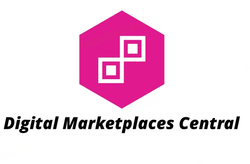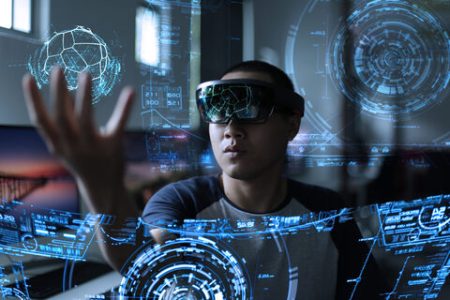Step into the future of B2B sales presentations with VR technology! Imagine captivating your potential clients with immersive experiences that bring your products or services to life right before their eyes. With virtual reality, you can transport decision-makers to a virtual world where they can explore, interact, and visualize the value your business offers like never before. From Fortune 500 companies to startups, businesses are leveraging VR technology to revolutionize their sales strategies and drive impressive results.
In this blog post, we will delve into the exciting world of VR technology in B2B sales presentations. Get ready to discover how this cutting-edge tool is taking sales pitches to new heights and unlocking unparalleled opportunities for growth.
What is VR Technology?
Virtual Reality (VR) technology is a game-changer in the world of B2B sales presentations. But what exactly is VR? Simply put, VR is a simulated experience that allows users to interact with computer-generated environments in a seemingly real or physical way. By wearing a VR headset, individuals are transported into these virtual worlds where they can explore and engage with their surroundings.
One of the key elements of VR technology is its ability to create an immersive experience. Through realistic graphics, 3D audio, and motion tracking sensors, users feel as if they have stepped into another dimension entirely. This level of immersion captivates attention and creates lasting impressions on potential clients.
VR technology enables businesses to showcase their products or services like never before. Instead of relying on traditional brochures or static images, companies can now demonstrate the functionality and features of their offerings in interactive ways. For example, architects can walk clients through virtual tours of future buildings; automotive manufacturers can allow customers to virtually test drive vehicles; and industrial equipment suppliers can simulate how machinery operates in various scenarios.
VR opens up new possibilities for customization and personalization when it comes to sales presentations. Companies can tailor experiences based on individual client needs and preferences by allowing them to choose different options within the virtual environment. This level of interactivity enhances engagement and makes prospects feel more involved in the decision-making process.
VR also has the power to evoke emotions within users during sales presentations. By creating immersive storytelling experiences or showcasing real-life use cases where their product solves specific pain points for customers, businesses can tap into emotions such as excitement or relief – effectively compelling prospects towards making purchasing decisions.
VR technology offers an unparalleled opportunity for businesses looking to enhance their B2B sales presentations significantly. With its ability to provide immersive experiences tailored specifically for each client’s needs while evoking emotions along the way – there’s no doubt that VR is reshaping the way companies engage with potential customers.

The Benefits of Using VR in B2B Sales Presentations
When it comes to B2B sales presentations, standing out from the competition is crucial. And one way to do that is by incorporating virtual reality (VR) technology into your sales strategy. VR technology offers a range of benefits that can take your presentations to the next level.
First and foremost, using VR in B2B sales presentations allows you to create immersive experiences for potential clients. Instead of relying on traditional slides or brochures, you can transport your audience into a virtual world where they can interact with your products or services in a realistic and engaging way.
This level of immersion not only captures attention but also enhances understanding. By allowing prospects to experience your offerings firsthand, you are providing them with a deeper understanding of how your products or services work and how they can benefit their business.
VR technology enables you to showcase complex or large-scale products that may be difficult to demonstrate physically. Whether it’s showcasing architectural designs for construction projects or presenting intricate machinery, VR allows potential customers to explore every detail without limitations.
Using VR in B2B sales presentations helps build trust and credibility. When prospects see that you have invested in cutting-edge technology like VR, it signals that you are innovative and forward-thinking – qualities that clients value when choosing a business partner.
Incorporating VR into your sales strategy sets you apart as an industry leader who embraces the latest advancements. It demonstrates that you are willing to go above and beyond traditional methods to provide exceptional experiences for your clients.
By harnessing the power of virtual reality in B2B sales presentations, businesses can captivate their audience with immersive experiences while effectively communicating their value proposition. So why stick with outdated presentation techniques when there’s an opportunity waiting for you in the realm of virtual reality?
Real-Life Success Stories of Companies Using VR for Sales
Many companies have already embraced the power of virtual reality (VR) technology to enhance their B2B sales presentations. By immersing potential clients in a simulated environment, these companies are taking their sales pitches to a whole new level.
One success story comes from an automotive manufacturer that used VR to showcase its latest models. Instead of relying on static brochures or videos, they allowed potential buyers to virtually sit inside the cars and experience them firsthand. This interactive approach not only increased customer engagement but also improved conversion rates.
Another company in the construction industry utilized VR to give clients a realistic tour of their future projects before they were even built. By using 3D modeling and VR headsets, they were able to help clients visualize the finished product and make more informed decisions.
A global furniture retailer revolutionized their sales process by implementing VR technology in their showrooms. Customers could explore different furniture arrangements and experiment with various colors and styles without leaving the store. This immersive experience led to higher customer satisfaction levels and ultimately boosted sales.
In the healthcare sector, pharmaceutical companies have found success using VR as a training tool for medical professionals. Instead of traditional classroom settings or observing surgeries live, doctors can now practice procedures through virtual simulations which provide a safe learning environment.
These real-life success stories demonstrate how incorporating VR into B2B sales strategies can yield impressive results across diverse industries. With the ability to engage customers on a deeper level, increase interactivity, improve decision-making processes, and provide valuable training experiences – it’s no wonder why so many businesses are embracing this innovative technology!
The impact of virtual reality in boosting B2B sales is undeniable, paving the way for more immersive and personalized experiences for both sellers and buyers alike. As technology continues to advance at an exponential pace, we can expect even greater innovations in this space moving forward.
How to Incorporate VR into Your B2B Sales Strategy
Incorporating virtual reality (VR) into your B2B sales strategy can revolutionize the way you engage with clients and showcase your products or services. Here are some tips on how to seamlessly integrate VR technology into your sales presentations.
Identify the specific areas of your sales process where VR can add value. Perhaps you want to provide immersive product demonstrations or give clients a virtual tour of your facilities. By understanding the unique selling points of VR, you can tailor its implementation to meet your business objectives.
Next, invest in high-quality VR equipment and software that aligns with your needs. Whether it’s headsets, controllers, or 360-degree cameras, choose reliable tools that offer a smooth and realistic experience for both you and your clients.
Once you have the necessary hardware and software in place, develop customized VR content that effectively showcases your products or services. This could include interactive demos, simulations of real-life scenarios using augmented reality overlays, or even virtual walkthroughs of proposed projects.
To maximize engagement during sales presentations, ensure that all participants are comfortable wearing VR headsets by providing proper instructions and support throughout the process. Additionally, consider incorporating haptic feedback devices to enhance sensory experiences further.
When presenting with VR technology, be sure to highlight its benefits explicitly – improved visualization capabilities for complex products/services; increased client engagement through interactive features; reduced costs associated with physical prototypes/travel expenses; enhanced brand perception as an innovative leader in the industry.
Make sure to train your sales team on how best to utilize VR during their interactions with potential customers. They should understand not only how to operate the equipment but also how to guide clients through an immersive experience smoothly while highlighting key selling points effectively.
By incorporating these strategies into your B2B sales approach using virtual reality technology, you’ll be able to create memorable experiences for prospective clients while gaining a competitive edge in the market.
Common Misconceptions and Challenges with VR Technology
While VR technology has gained significant traction in recent years, there are still some common misconceptions and challenges that surround its use in B2B sales presentations. One misconception is that VR is only suitable for gaming or entertainment purposes. However, the reality is that VR has immense potential to transform the way businesses engage with their clients and showcase their products.
Another challenge lies in the cost associated with implementing VR technology into a sales strategy. Some may argue that it requires a large financial investment, making it inaccessible for smaller businesses. However, as technology advances and becomes more affordable, we can expect to see an increase in accessibility for businesses of all sizes.
There is often a perception that using VR in sales presentations may alienate certain demographics who are less familiar or comfortable with this type of technology. While this concern does exist, companies can overcome it by providing proper training and support to ensure seamless navigation of the virtual environment.
There may be technical challenges such as hardware limitations or compatibility issues between different devices and platforms. However, these obstacles can be mitigated through thorough testing and research before integrating VR into your B2B sales strategy.
Despite these challenges and misconceptions surrounding VR technology, its benefits far outweigh any initial concerns when used correctly. As businesses continue to explore innovative ways to engage clients digitally, incorporating VR into B2B sales presentations will undoubtedly become more prevalent in the future.
The Future of B2B Sales Presentations with VR
As technology continues to advance at an exponential rate, the future of B2B sales presentations is looking more immersive and captivating than ever before. Virtual Reality (VR) technology is poised to revolutionize the way businesses engage with their potential clients, bringing a whole new level of interactivity and realism to the sales process.
With VR, sales professionals can transport their prospects into virtual environments that showcase products or services in a way that was previously unimaginable. Imagine being able to walk through a virtual factory or office space, experiencing firsthand how a product or solution works in real time. This level of immersion not only captivates audiences but also allows them to truly understand and visualize the value proposition being presented.
VR provides an opportunity for personalized and tailored experiences. Sales presentations can be customized based on specific client needs and preferences, creating an interactive journey that addresses individual pain points and showcases relevant solutions.
In addition to enhancing engagement and personalization, VR also has the potential to streamline the sales process. With remote collaboration features, decision-makers from different locations can join virtual meetings seamlessly without having to travel physically. This saves time and resources while enabling efficient communication between teams.
Despite these challenges though,the future holds immense promise for B2B sales presentations with VR technology. The possibilities seem endless,and it’s excitingto think about how this innovation will continue evolvingand transformingthe way businesses connectwith their customers.
Conclusion
In today’s fast-paced business world, staying ahead of the competition is crucial. B2B sales presentations play a pivotal role in winning clients and closing deals. And with the advent of VR technology, taking these presentations to the next level has become easier than ever before.
VR technology offers numerous benefits for B2B sales presentations. It allows businesses to create immersive and interactive experiences that engage prospects on a whole new level. By providing a realistic simulation of products or services, VR helps potential customers visualize their benefits more effectively.
Real-life success stories from companies using VR for sales demonstrate its power and effectiveness. From automotive manufacturers showcasing their latest models to real estate developers offering virtual property tours, VR has proven to be a game-changer in capturing customer attention and driving conversions.
To incorporate VR into your B2B sales strategy, start by identifying opportunities where it can add value. Determine which aspects of your product or service could benefit from an immersive experience – whether it’s demonstrating complex features, visualizing customizations, or showcasing different use cases.
Looking towards the future, we can expect even more advancements in VR technology that will further enhance B2B sales presentations. From haptic feedback systems that provide tactile sensations to augmented reality overlays that blend virtual elements with real-world environments, the possibilities are endless.



